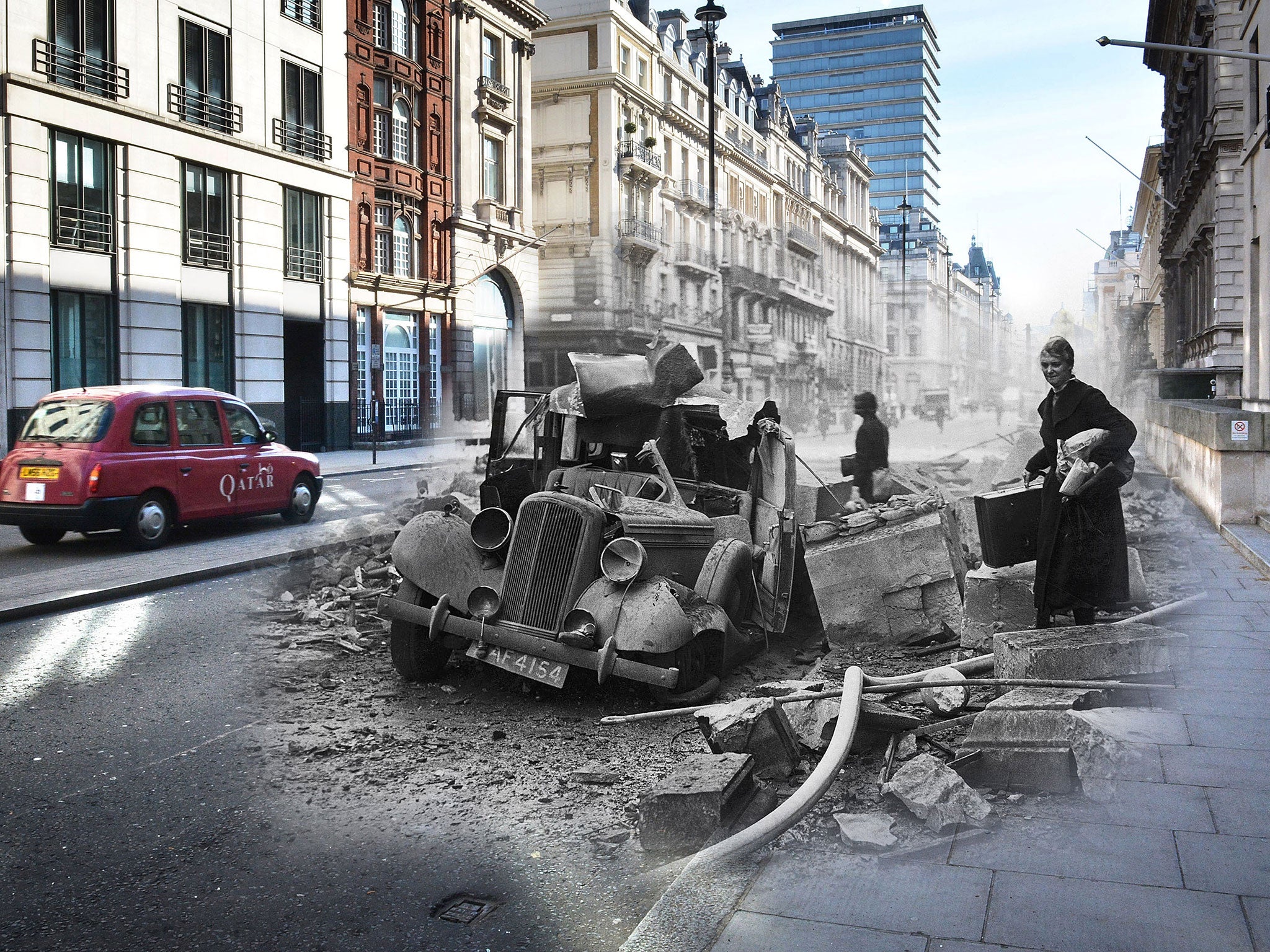Horrors of Blitz in London brought into focus with striking photos that blend past and present
The worst night of the Blitz was in May 1941 when the Houses of Parliament were damaged

Powerful images have been released to mark the 75th anniversary since the Blitz, which pair pictures of the wartime destruction seen in London with scenes from today to show the damage endured by the capital during WWII.
The Blitz, from the German word “blitzkrieg” meaning “lightening war” lasted from September 1940 to May 1941.
Most of Britain was hit by the Nazi onslaught from the sky, with destruction seen across Coventry, Bristol, Birmingham, Southampton, Sheffield, Manchester, Cardiff, Portsmouth and many other cities, but London endured the worst attacks, including 57 consecutive nights of raids.
The first day of the aerial bombing on 7 September 1940 was known as “Black Saturday” for the destruction that was caused to the city and its residents - 430 people were killed and 1,600 injured in the attacks, according to the Imperial War Museum.
The last major raid on the capital was on the night of 10 May 1941, when 711 tonnes of high explosives were dropped by German bombers, killing 1,436 people. Bombs hit Waterloo station, the British Museum and the Houses of Parliament, and the attack became known as “The Longest Night”.
Join our commenting forum
Join thought-provoking conversations, follow other Independent readers and see their replies
Comments